
Menu
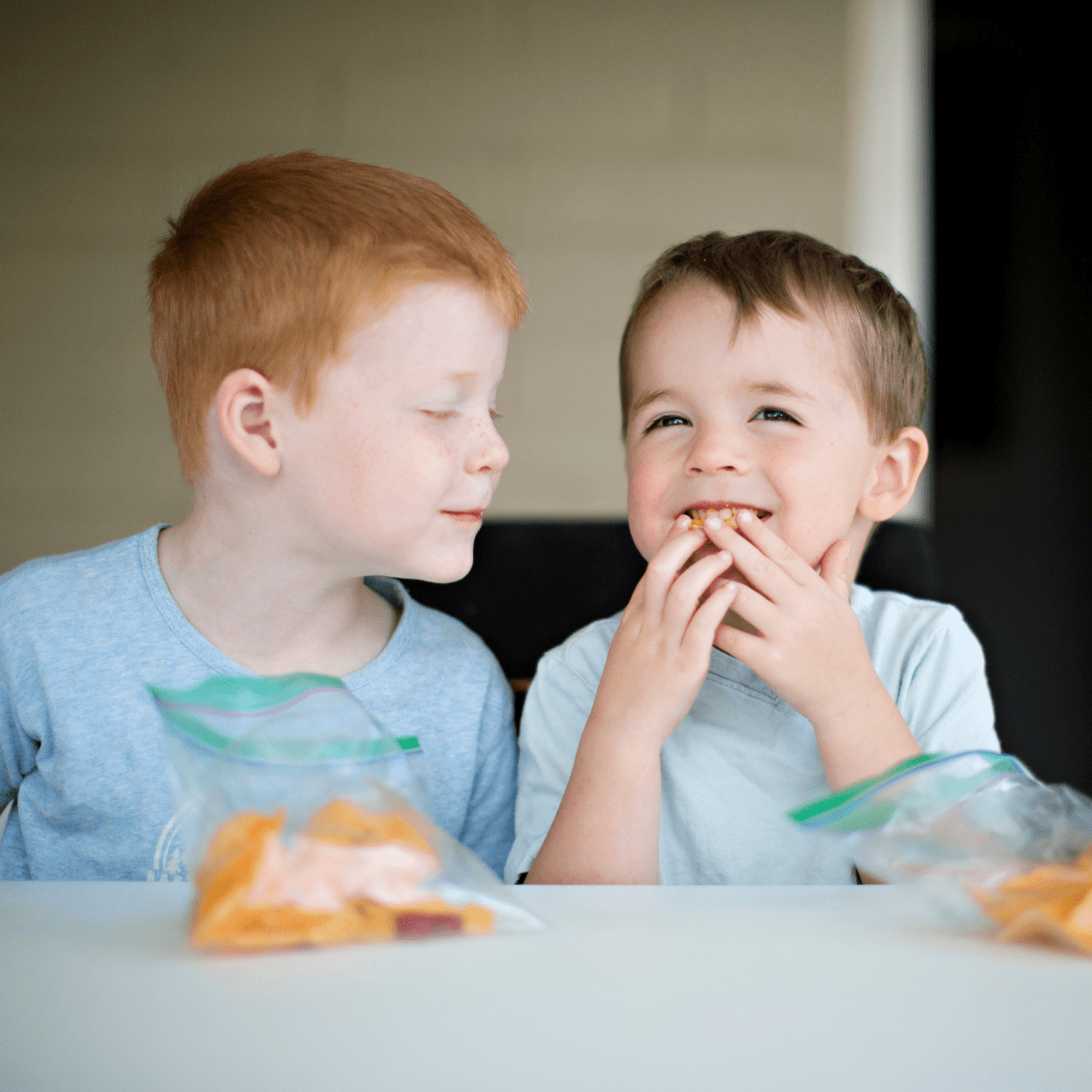
Why is feeding our kids so hard?! Like, it’s endless. And we have to do it every day. Multiple times a day. 😅 For most families, that looks like 3 meals and 2 snacks each day. But sometimes you need 3 snacks a day depending on your schedule. And if you do the math, that adds up to a LOT of snacks that you need to plan, prepare, serve, and clean up.
From a mom perspective, I want those snacks to appease the tiny humans and make prep and clean up easy on you. But from an RD perspective, I want to help you make sure they’re getting somewhat balanced food at snacktime, too. At least some of the time! So let’s take a look at 3 of the most popular kids’ snacks—pretzels, Cheerios, and Goldfish crackers—and answer the golden question: are they healthy?
First, I want to be clear that no food is good or bad. Truly, all foods can fit into a healthy diet. No one food is going to make or break your child’s diet, either. (If you’re getting that message from somewhere, I want you to be really critical of where it’s coming from!)
In the long run, what they eat most of the time matters more than what they eat sometimes. And the most important thing is a diet that’s filled with a variety of foods—meaning different colors, textures, nutrients, and all that good stuff!
But all of that said, it’s definitely true that some foods are more nutrient-dense, satiating, and well-rounded than others. And it’s okay to want to prioritize those foods in your kid’s diet. So let’s talk about what makes a “healthy” or well-rounded snack.
Note: I want you to use this formula as a guide when you can and not stress or feel like a not-good-enough parent when it doesn’t come together perfectly. Okay? Okay!
A well-rounded snack will include all 3 macronutrients: carbs, protein, and fat.
Foods have nutritional pros and cons—things they provide and things they lack. A lot of the traditional snack foods, including pretzels, Cheerios, and Goldfish, have carbs—the body’s preferred quick energy source—and give our kids some of the calories they need in a day. So, those are two big pros! But, these types of foods are usually low in other nutrients like fat and protein. Also, they are typically low in micronutrients (vitamins and minerals).
Without all three macronutrients, these snacks can quickly become what I call “crunchy air.” They provide an energy boost and they are satisfying taste-wise, but they won’t keep your toddler full for long. That doesn’t mean they can’t be part of a balanced snack—just that they aren’t perfectly balanced on their own. So it’s a good idea to pair them with something else to round them out and increase the staying power!
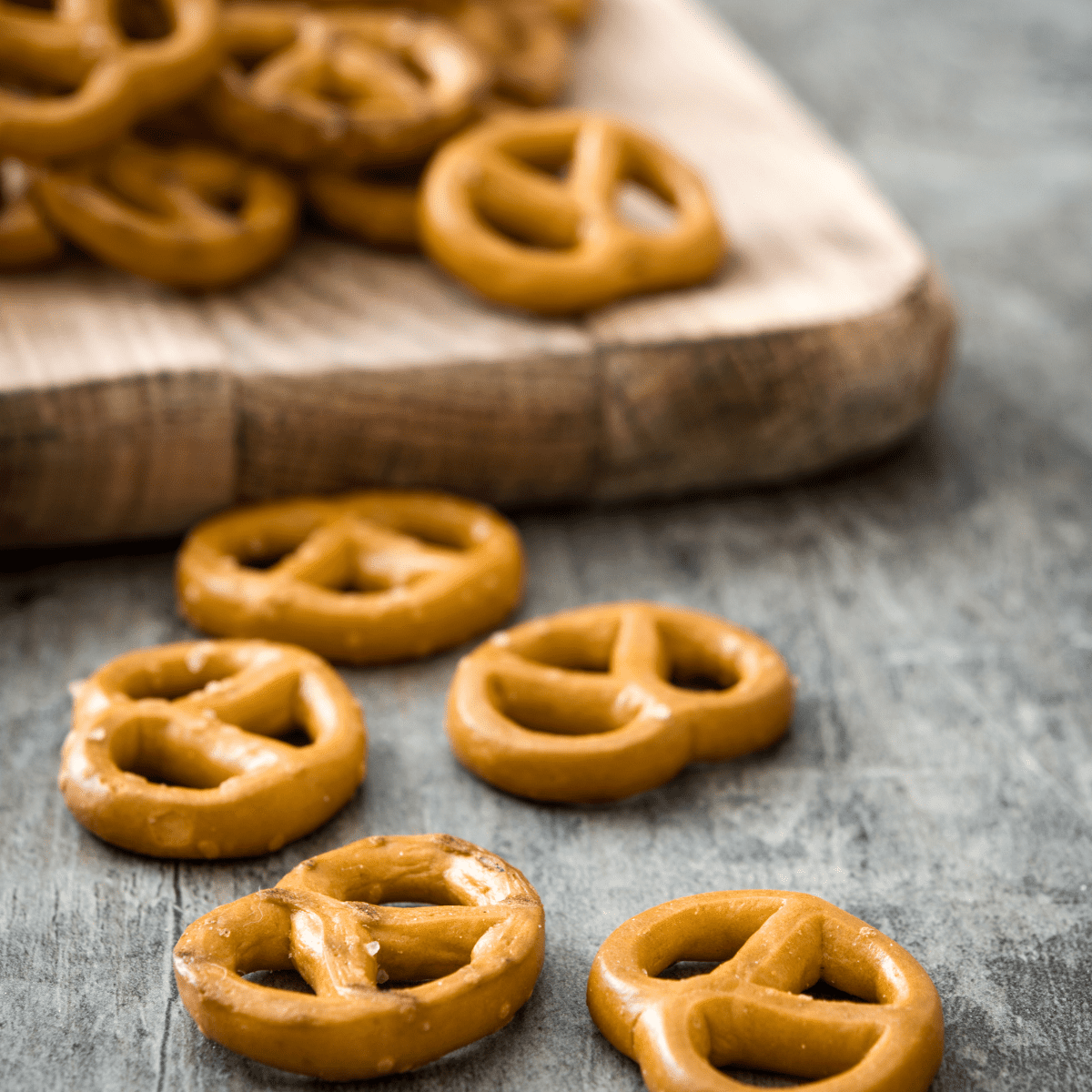
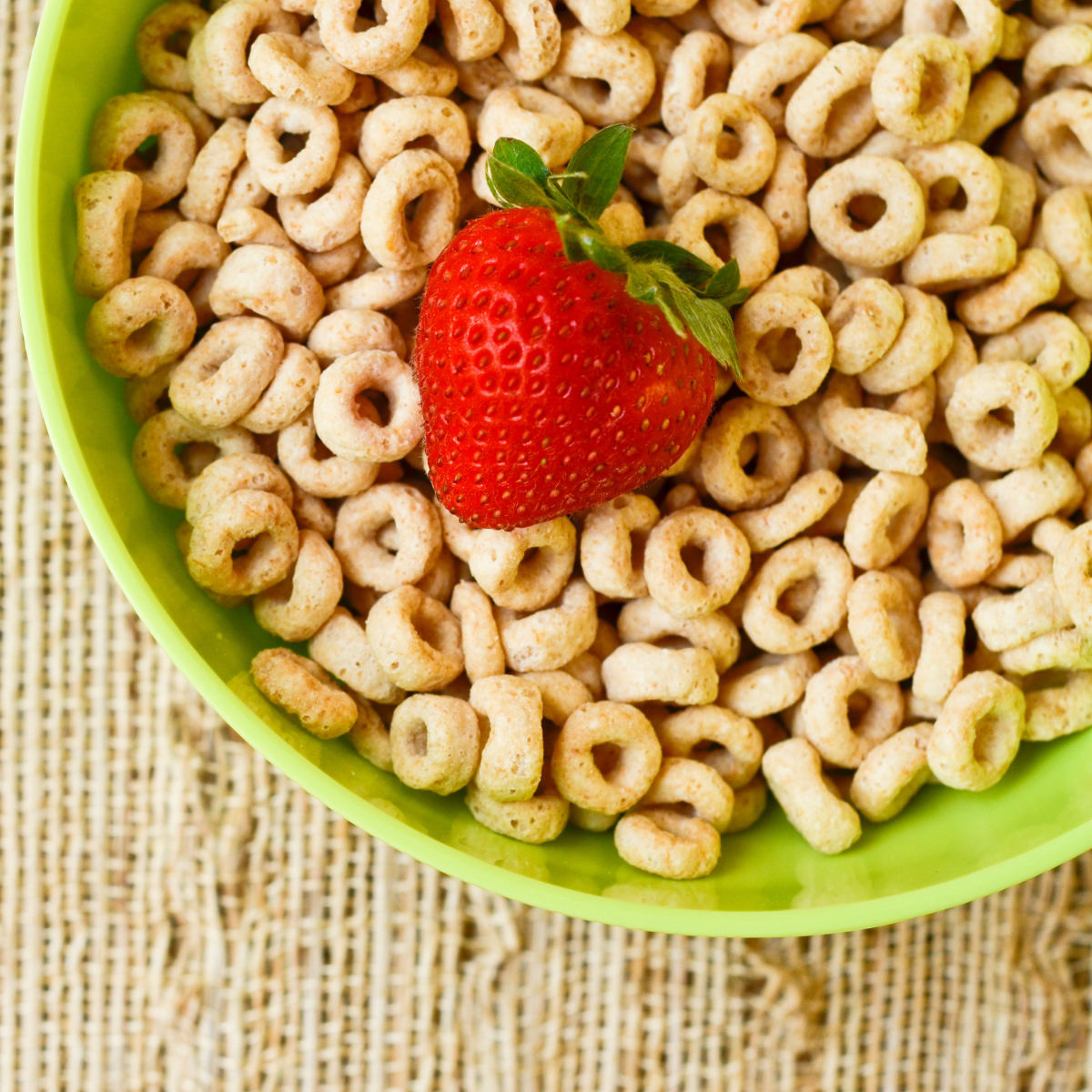
(Still have questions about pretzels and Cheerios? Listen to Episode #65 of the Mama Knows Nutrition Podcast: Pretzels and Cheerios: Are they healthy or not?)
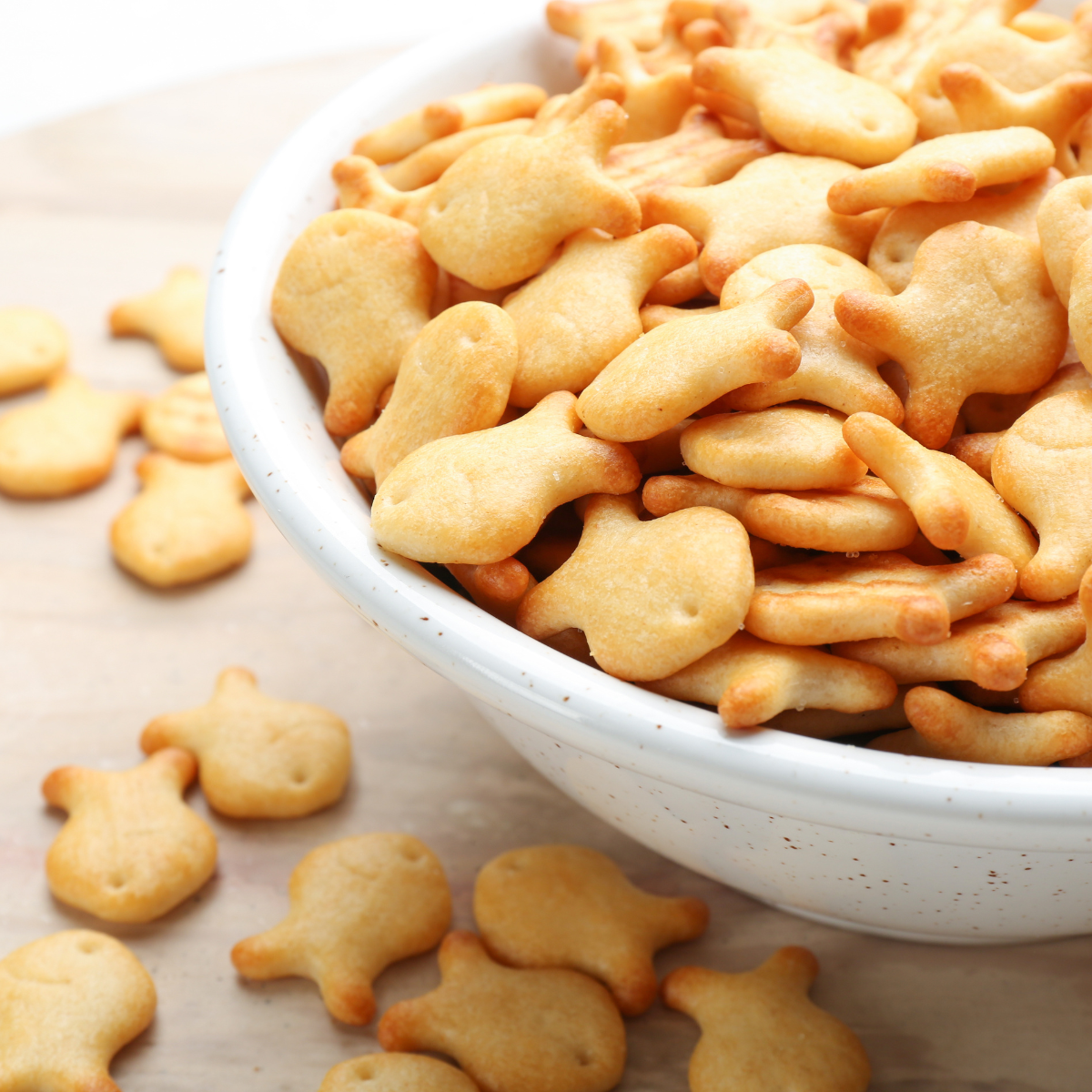
(Still have questions about Goldfish? Listen to Episode #40 of the Mama Knows Nutrition Podcast: Are Goldfish Crackers Actually Healthy? Ask A Dietitian!)
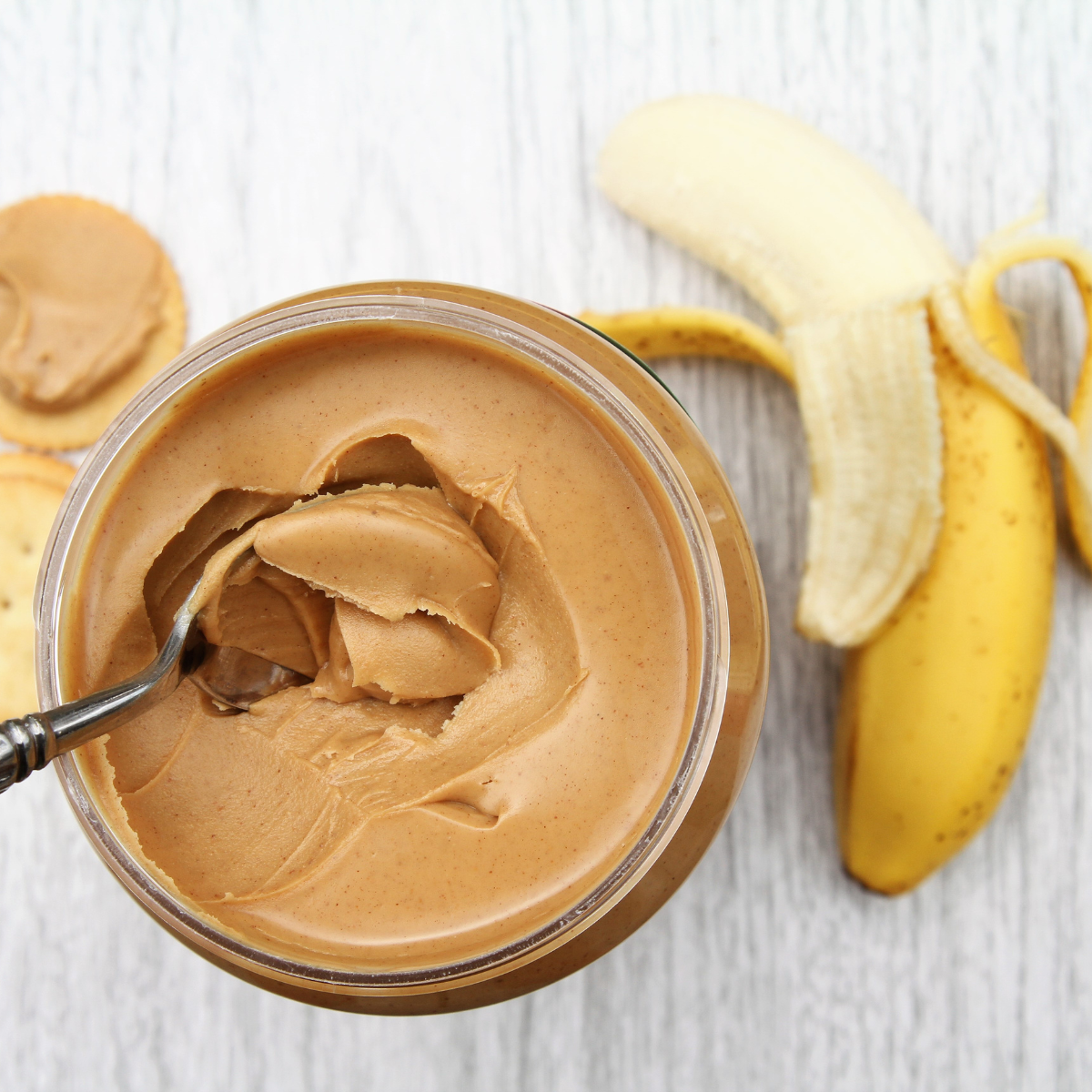
There’s absolutely no reason to throw out your pretzels, Cheerios and Goldfish. And there’s no reason to stress about making every snack the perfect snack, either! But if reading this post made you feel like you want to add a few new snack options to the mix, or you just want some fresh school snack ideas for your little ones, I get that!
Here are 10 of my favorite go-to healthy, balanced snacks for kids:
Related: Healthy & Balanced Protein Snacks for Kids
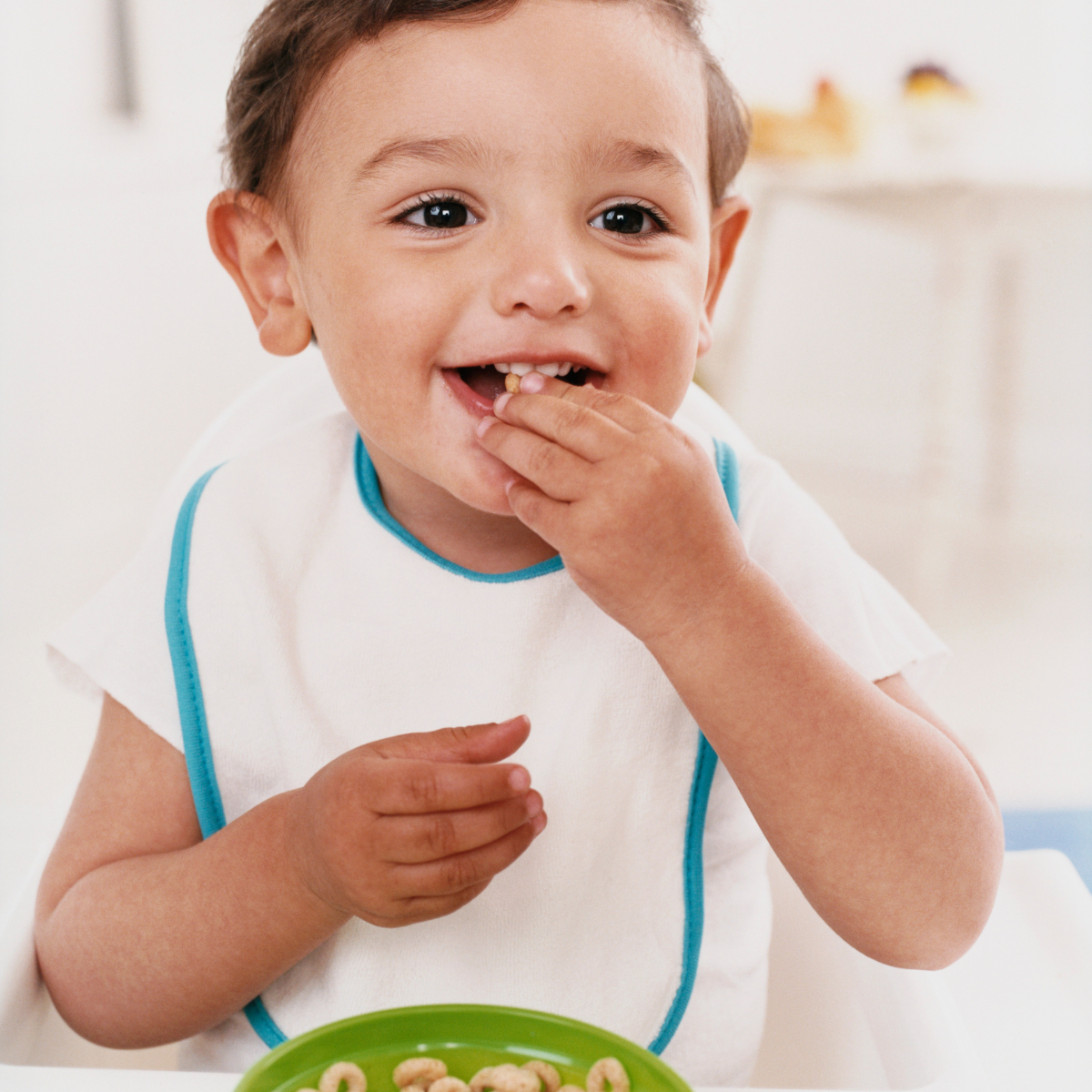
Pretzels, Cheerios, and Goldfish aren’t the most complex or complete snacks, meaning they lack macronutrients (mainly protein and fat) and micronutrients. (Cheerios are the exception since they are fortified with some vitamins and minerals). That means they won’t be as filling or provide everything your toddler needs in one sitting.
My favorite way to serve these snacks is alongside something extra to round them out. Because when they eat all the macronutrients together, your toddler will stay fuller for longer and have more consistent energy. That means no spike and crash, which is often what happens when they eat just carbohydrates.
But remember, no food is just good or bad. And all foods can fit into a healthy diet! Do these snacks have the utmost nutritional value? Not necessarily. But are they okay for your child to have? Absolutely. They still provide things that their bodies need like calories, carbs, certain vitamins, and minerals. And paired with other foods to balance them out, they can be part of a snack that makes both you and your child super happy.
Snacks are hard. You need so many of them! Every single day! And all that planning, washing, cutting, cooking…some weeks it feels like WAY too much.
This guide makes grab-and-go toddler snacks easy—and a little more nutritious, too. In it, I share photos of my favorite brands and labels so that you don’t have to measure, count, or think about anything extra. It’s easily viewed from your phone too, so you can quickly pull it up in Target and decide what to get!

I’m a mom of two and a Registered Dietitian Nutritionist. I offer e-guides and e-books (go to my Shop page), workshops, brand partnerships, and nutrition counseling. Check out my blog for nutrition and feeding tips for your little ones.
This post may contain affiliate links. I may earn a commission. As an Amazon Associate I earn from qualifying purchases.
0 Comments